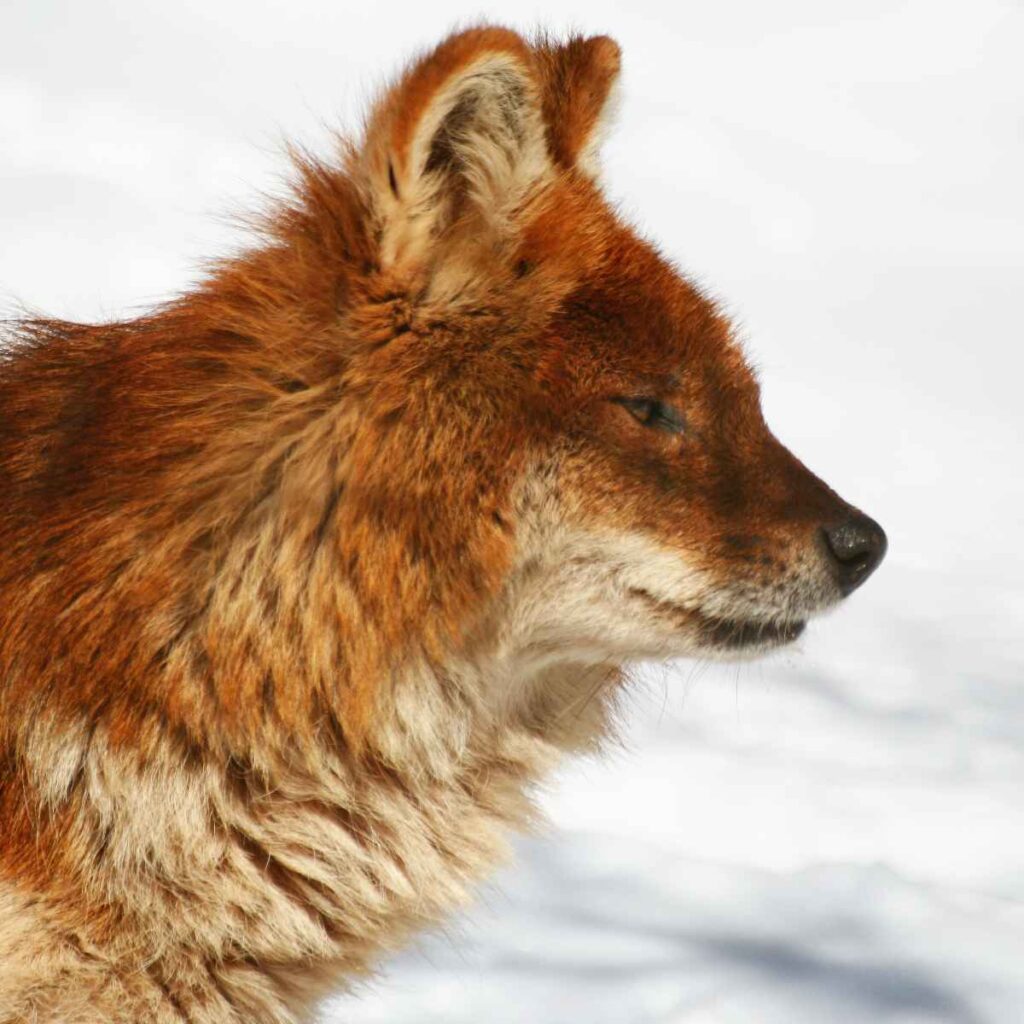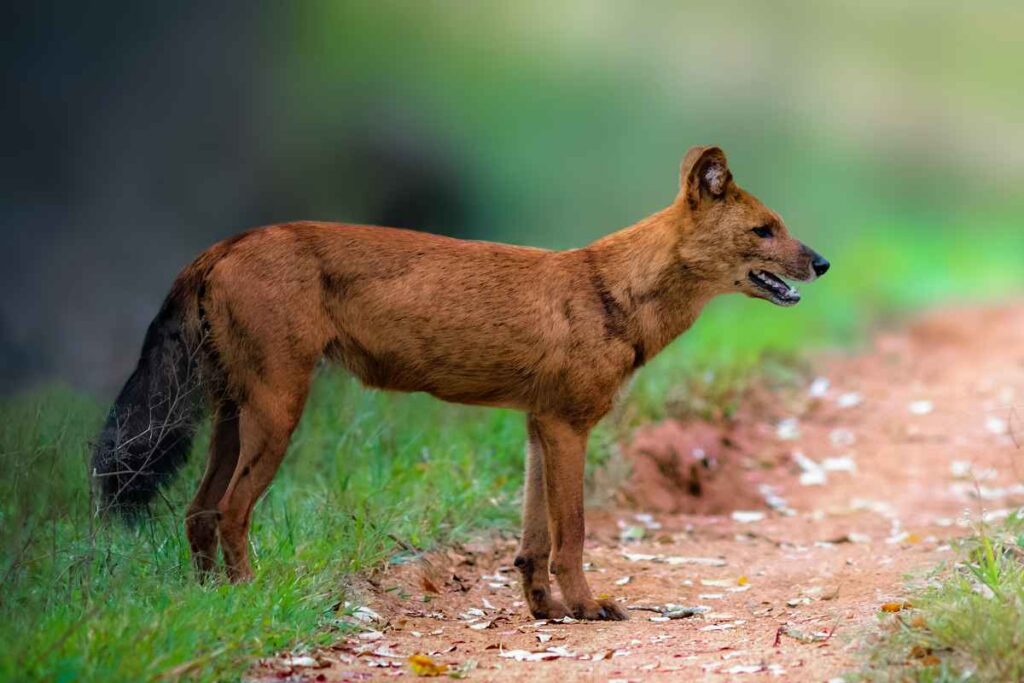Last Reviewed and Updated on February 13, 2023
Dholes, also known as Asiatic wild dogs, are one of the most fascinating canid species on Earth; they look like a mix of wolves and foxes. They live in large packs and are capable of hunting down large prey. Let’s explore some interesting facts about dholes and what makes them different from other canids.

About Dholes
Dholes (Cuon alpinus), also known as Asian or Asiatic wild dogs, Indian wild dogs, whistling dogs, red dogs, red wolves, or mountain wolves, are a species of canid native to Central, East, and South East Asia.
They are found in various habitats, including grasslands, forests, and deserts.
Seven subspecies of dhole are recognized;
- Burmese dhole
- Ussuri dhole
- C.a. fumosus
- Tien Shan dhole
- C.a. laniger
- C.a. lepturus
- Sumatran and Javan Dhole
Dholes have a slender and athletic build, something in between the gray wolf and the red fox. They have short fur that is usually reddish-brown and a bushy tail that is a bit darker.
Dholes primarily eat meat but eat fruit and vegetables more readily than most other canids.
They typically have litters of 4-6 pups, which are raised and cared for by the entire pack. The breeding season typically occurs in the winter, and pups are born in the spring.
Dholes are an endangered species.
Interesting Facts About Dholes
Get to know these animals better by reading these fun facts about dholes.

Also read: 100 strange facts about animals
1. Dholes are highly social, living in large groups
Dholes are highly social animals that live in large groups. They are very close to one another and have a strong bond within their pack. In the wild, dholes typically live in packs of around 12 individuals, but they can also be found in smaller or larger groups. Groups with over 40 members have been reported.
2. They don’t have a rigid dominance hierarchy
Unlike many other canines that live in packs, dholes don’t seem to have a rigid hierarchy within the group. Dholes don’t engage in dominance displays, so dominant animals are hard to identify within a pack. They rarely fight within a group and have no issues accepting pups from another pack.
There are multiple breeding females in the pack.
3. Dholes don’t bark or howl
They make many sounds but don’t bark or howl as wolves and dogs do.
4. Dholes produce whistling sounds similar to the whistles of red foxes
They are also known as whistling dogs; one of the characteristic sounds they make is a whistle that sounds similar to the calls of red foxes. It is not entirely known how they produce this sound, although there are some speculations (source study; Potential Sources of High Frequency and Biphonic Vocalization in the Dhole (Cuon alpinus) by R. Frey., I.A. Volodin, G. Fritsch, E.V. Volodina).
They also whine, scream, chatter, and yap.
5. They don’t seem to mark their territory with urine
Canids commonly mark their territory with urine, but dholes haven’t been observed doing this. They also don’t seem to defecate to mark their territory; the feces isn’t deposited in strategic places.
Other canids also commonly scrape the ground with their feet to mark their territory, which is another thing that dholes don’t do.
6. Dholes can dig underground “cities”
These wild dogs both use dens from other animals (like hyenas or porcupines) and dig their own. The dens can be simple, with just one entrance, or complex, with multiple entrances, chambers, and tunnels.
Dens can be dug and enlarged by many generations of dholes.
7. They avoid killing prey near their dens
One reason why dholes do not kill their prey near their dens may be to prevent attracting other predators to the area. By killing their prey at a distance from their dens, dholes reduce the risk of attracting unwanted attention to their dens.
8. The clan feeds the nursing mothers
When female dholes give birth to their pups, they will nurse them for weeks. While they are nursing, other pack members bring the food to them.
9. They rely on sight when hunting
Dholes are diurnal hunters. They generally don’t hunt at night. There is an exception to that, though; they will hunt on nights when the moon is bright, suggesting they rely on sight when they hunt.
10. Dholes are master hunters
These animals prey on many animals, big and small. They have various techniques for how they hunt, depending on the size and type of their prey. They have even been known to blind their prey, targeting eyes specifically. Dholes will target a specific part of the animal, depending on the animal they prey on.
They don’t mind going after larger, more dangerous animals (although they do this only occasionally). They will attack black bears, snow leopards, and sloth bears.
